Landscaping your property can be quite a challenge depending on how much land you own. Some prefer a bare green lawn that is well cared for. Others like to go all out with islands filled with various plant life surrounded by solar lights. Any way you picture your perfect yard; every yard needs a tree with white bark. White bark provides a stronger contrast against bright colors, most common in gardens and landscaping.
Read on for 15 gorgeous trees with white bark you need to have included on your property! These are the most beautiful trees and will add an exceptional touch to your property.
![Looking up poplar trees, 15 Gorgeous Trees With White Bark [And Where You Can Grow Them]](https://gardentabs.com/wp-content/uploads/2021/05/15-Gorgeous-Trees-With-White-Bark-And-Where-You-Can-Grow-Them.png)
15 White Bark Trees
Whitebark on trees is a biological adaption for the tree that protects against the damaging sun. Darker trees tend to heat faster and hold the heat, but lighter trees tend to reflect the light with their white bark. Additionally, white bark trees offer several health benefits, such as astringent, antiseptic, and diuretic properties.
1. Paper Birch (Betula papyrifera)
![Low angle view of colorful Paper Birch trees in Autumn, 15 Gorgeous Trees With White Bark [And Where You Can Grow Them]](https://gardentabs.com/wp-content/uploads/2021/05/Low-angle-view-of-colorful-Paper-Birch-trees-in-Autumn.jpg)
Also referred to as the white birch, this tree is native to North America, Canada. It is also seen in the northeastern part of the United States. This tree needs well-draining soil and full sun to partial shade to be healthy. It has a life expectancy of about 30 years. The paper birch is the official state tree of New Hampshire and is usually seen throughout New England. It is most known for its stunning color change in the fall. The tree is also low maintenance, making it a good choice for landscaping.
2. Silver Burch (Betula Pendula)
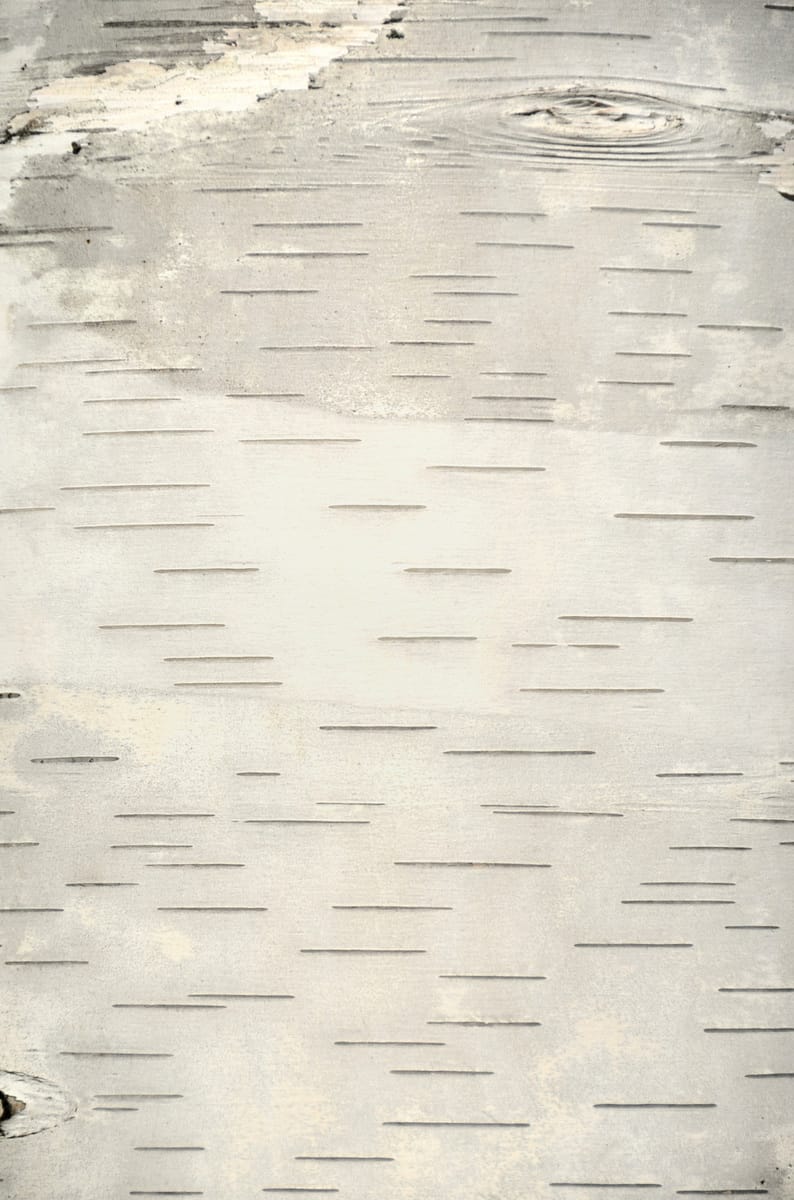
This birch is also known as the European Burch, native to Europe. However, it is grown in many parts of the United States for its ornamental value. A shiny whitebark is produced as the tree ages.
3. Quaking Aspen (Populus tremuloides)
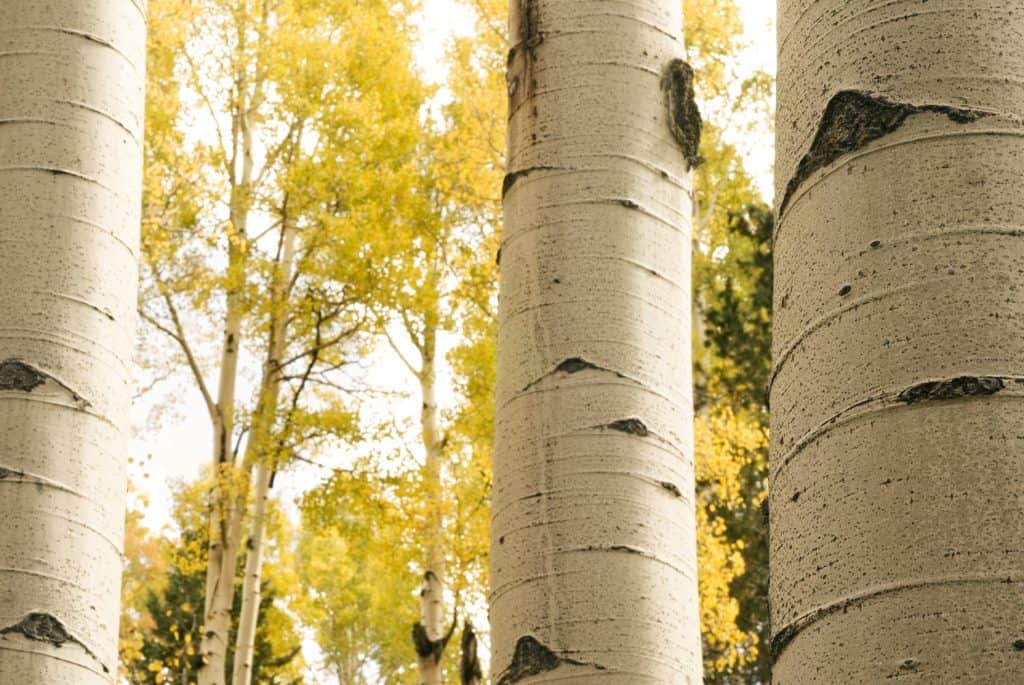
Also known as the American Aspen, this particular tree is primarily seen in Canada, New England, and the Rocky Mountains. It has a slender trunk and has a great contrast due to the dark undergrowth beneath the white bark. This tree is suitable for landscaping because it only grows as high as 50 feet usually.
4. Spinning Gum (Eucalyptus Mannifera)
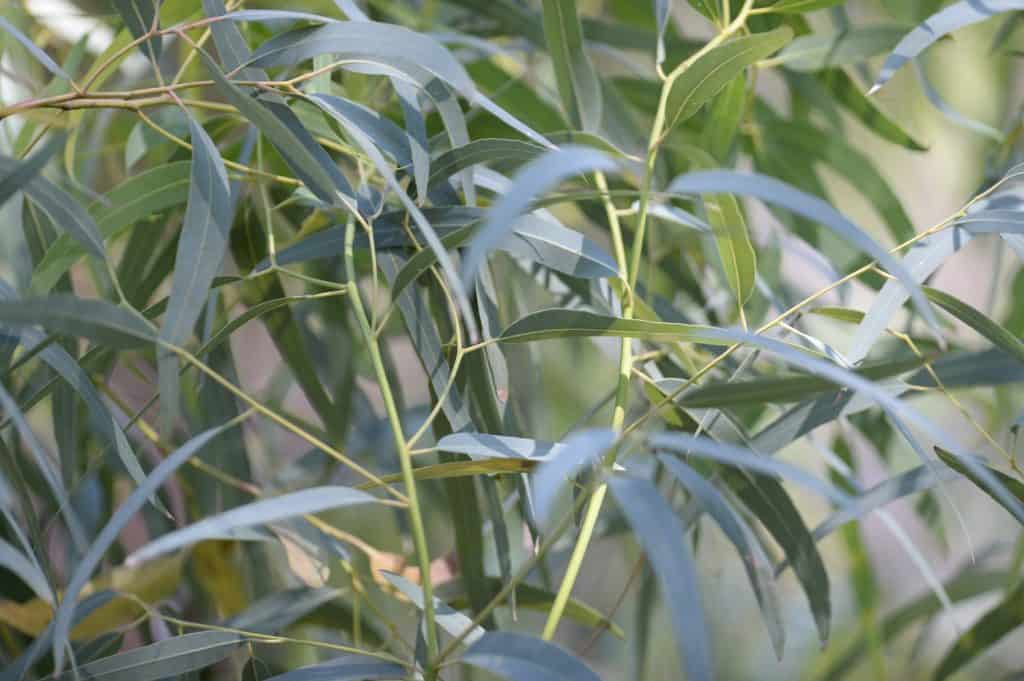
This tree is native to Victoria, New South Wales, Tasmania, and Australia. It is a sub-alpine tree species that do well for areas that snow for most of the year. The tree grows best in full sun and moderately fertile and slightly acidic soil that stays moist. The tree has small bark with off-white flaking ribbons for leaves.
5. Himalayan Birch (Betula utilis)
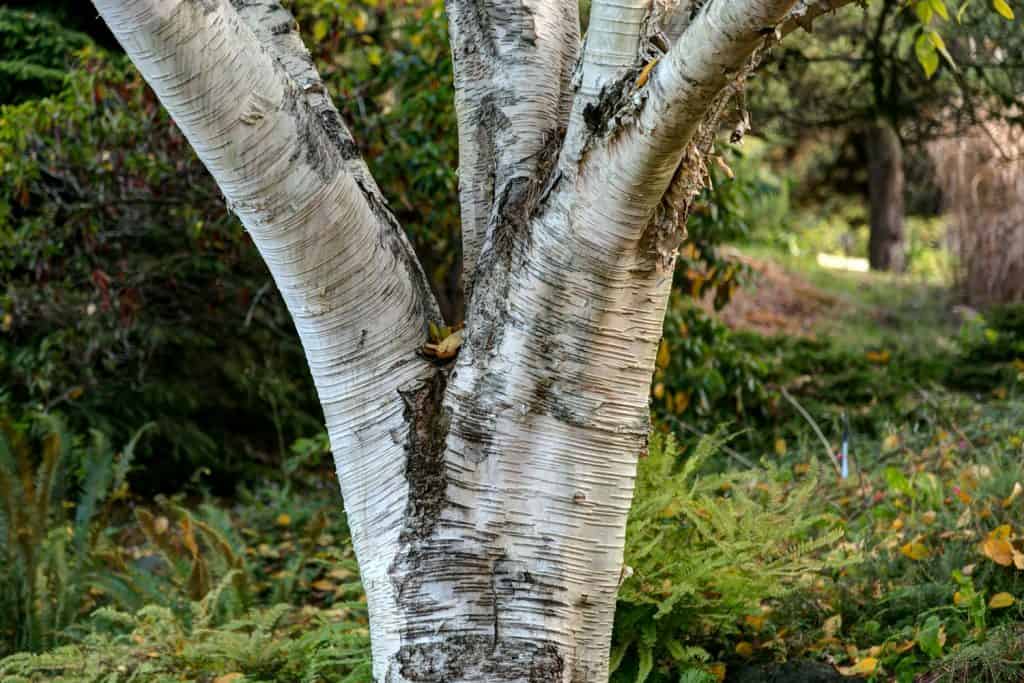
This tree is native to China. This tree lives in the western Himalayas in shrub and tree form to make forests. The tree bears shiny deep green leaves in spring, and they change to yellow and orange before dropping to the ground in the fall. This tree is adaptable to most soils and enjoys full to partial shade.
6. Tasmanian Snow gum (Eucalyptus coccifera)
Native to Tasmania, this tree grows 30 to 50 feet, and it multiplies. Its bark is smooth and multi-colored. The bark tends to have a marbled effect, with the main color being creamy-white based with strips of gray, pink, and blue. This tree requires full sun and well-draining, fertile, acidic, or neutral soil. The foliage of this tree takes the shape of hearts and tends to have a peppermint fragrance. If you're looking to make a strong statement, this is a necessity in your yard.
7. American Sycamore (Plantus occidentalis)
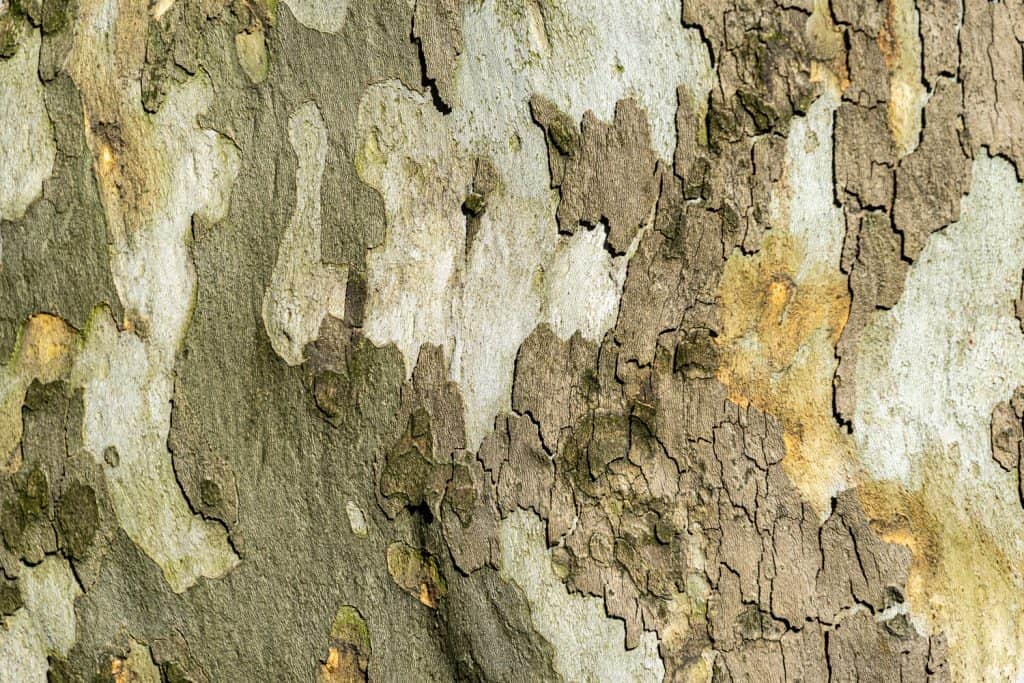
This species of trees are native to the eastern and central United States. Another common name is Sycamore in North America. This tree is easy to notice from the other trees because of a few unique characteristics. First, the tree has a mottled bark which tends to flake off in large pieces. This leaves the surface a mottle of gray, green, white, and brown. The trees can grow massive, up to 130 feet high and six feet in diameter. It typically flourishes in deep soils. The leaves come out green in the spring and turn brown in the autumn before falling.
8. White Poplar (Populus)
![Looking up poplar trees, 15 Gorgeous Trees With White Bark [And Where You Can Grow Them]](https://gardentabs.com/wp-content/uploads/2021/05/Looking-up-poplar-trees.jpg)
These trees increase and can grow up to 60 and 100 feet. The bark is white, smooth, and has a white hue that darkens as the tree ages. The trees grow to full potential with full sunlight and dry conditions. The White Poplar is a common name for many trees in the genus Populus. These trees are native to Eurasia most commonly.
9. Erman's Birch (Betula ermanii)
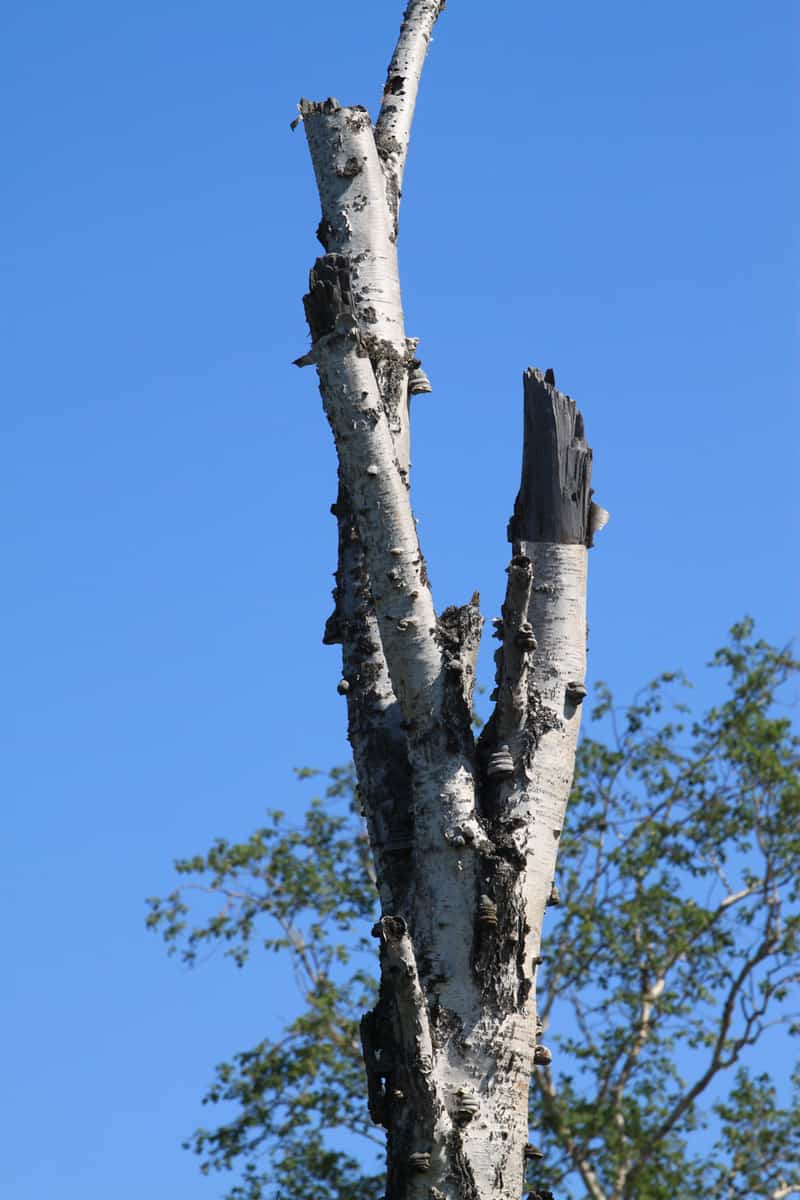
This species of trees is highly variable and can be found globally, including Northeast China, Korea, Japan, and Russian Far East. These trees can grow up to 60 feet tall. The Erman's birch is most known for its peeling bark and can be removed in sheets but usually shreds and hangs from the trunk naturally. They require a full or part shade sun and grow well in an extensive range of soils.
10. Plane Tree (Platanus x acerifolia)
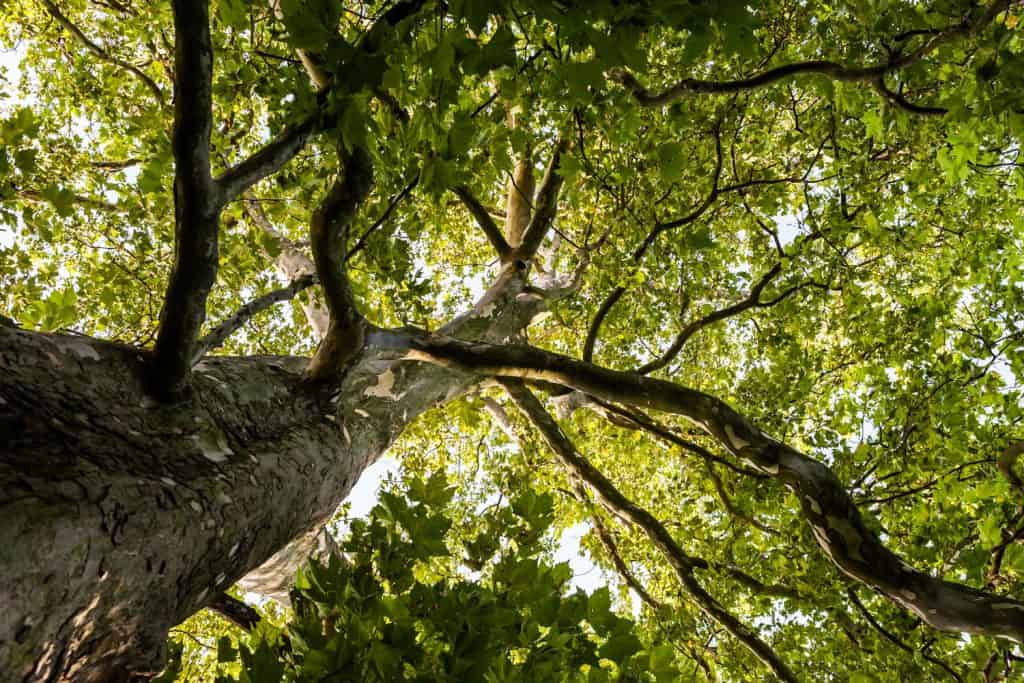
This unique tree is also known as the London plane and has a pale grey/green bark with thick and stiff-textured maple-like leaves. It is known for removing small particle pollutants in urban areas. It can be found in large cities like New York City, Sydney, Australia, and Johannesburg, South Africa. Generally, the tree provides generous amounts of shade and is robust against breakage and pollution of urban areas.
11. Bald Cypress (Taxodium distichum)
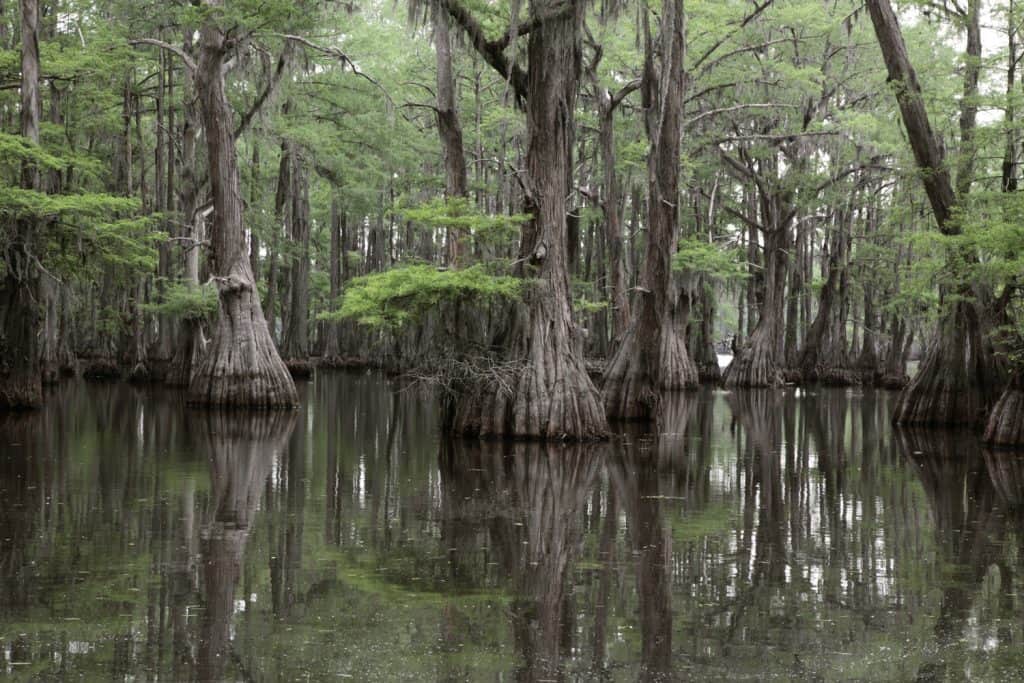
The tree is native to the southeastern United States. It extends from New Jersey down the coast to Florida, then west to Texas and Oklahoma up the Mississippi River. It can adapt to an extensive range of soil types, wet or salty, dry or swampy. The tree is well-known for the red color of its needles in the fall.
12. Whitebark pine (Pinus albicaulis)
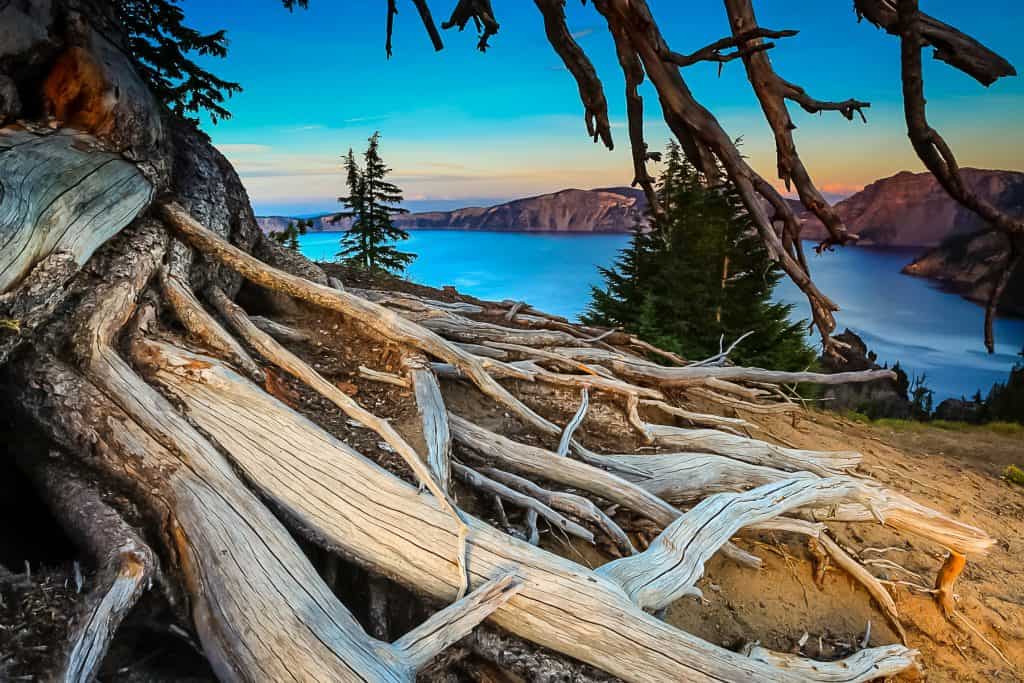
This tree grows well in higher-elevation mountain ranges. It can be found in the Sierra Nevada, Cascade Range, Pacific Coast Ranges, and the Rocky Mountains from Wyoming and northwards. They are often exposed to harsh and rocky areas.
13. White Satin Birch (Betula 'Madison')
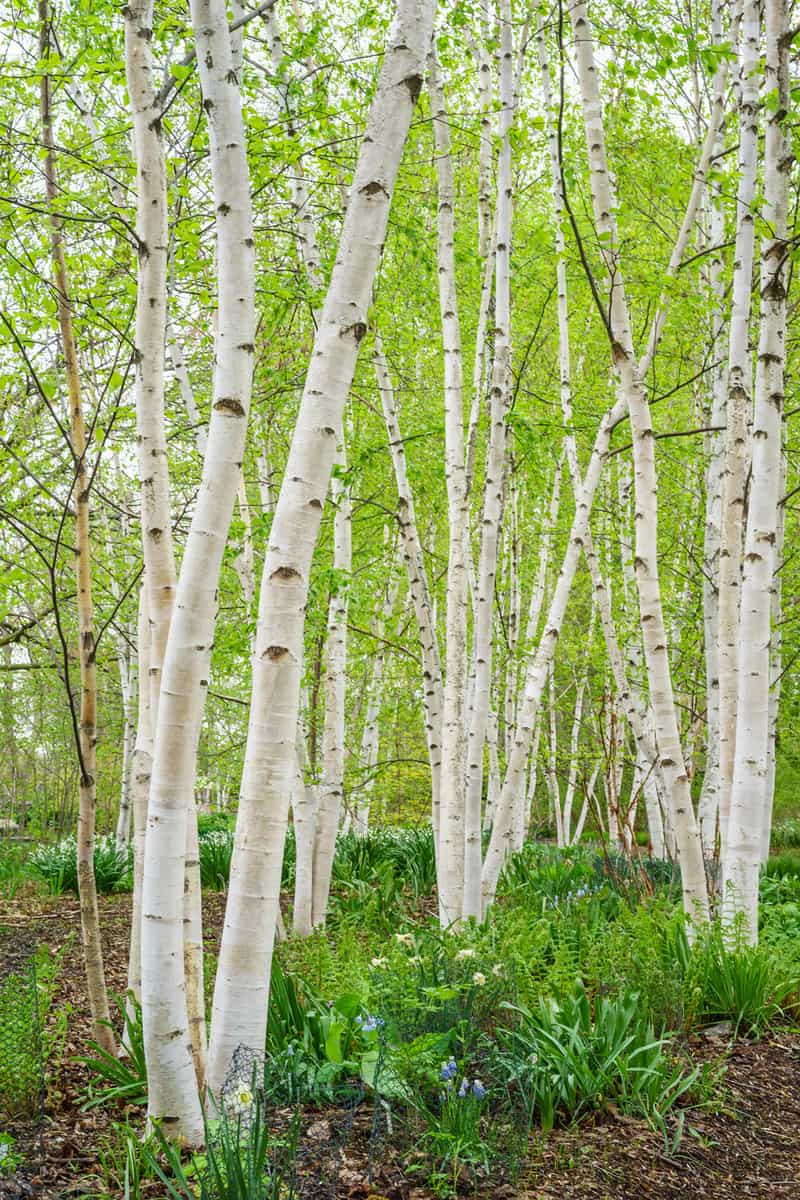
This tree is gracefully elegant and known for its satin-white bark. The tree is full sun or part shade lover and is best grown in average, medium to wet, well-drained soils. This plant is low maintenance and needs little care. The leaves are diamond-shaped and begin green in the spring and change to yellow in the fall. Since the tree is beautiful, it is primarily used in gardens as borders.
14. Ghost Gum (Corymbia)
The Ghost Gum tree is an Australian evergreen tree species. The tree's bark is brilliant white and stands out against the rich Australian landscape. The tree typically matures at 50 feet and can tolerate a range of soil, and thrives in coastal areas and milder climates.
15. Japanese White Birch (Betula platyphylla)
The Japanese White Birch tree grows best in full sun or part shade and grows quickly in medium to wet, well-drained soils. It also can tolerate dry soils but grows best in moist ones. The tree takes a pyramidal shape, spreading branches as it grows taller. They are seen frequently in the United States. The tree shows off gold-yellow colored leaves before finally falling off in the fall.
In Closing
When selecting the type of tree you are looking to plant in your yard, do some research to learn which tends to grow the best in your climate. Pay close attention to features that you find will beautify your yard as the seasons change. If you've taken an interest in these white bark tree species, you might also be interested to read our other articles:
![Low angle view of colorful Paper Birch trees in Autumn, 15 Gorgeous Trees With White Bark [And Where You Can Grow Them]](https://gardentabs.com/wp-content/uploads/2021/05/15-Gorgeous-Trees-With-White-Bark-And-Where-You-Can-Grow-Them1.png)
